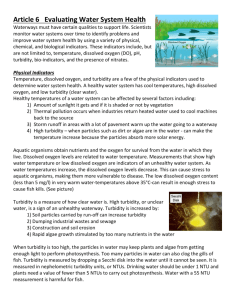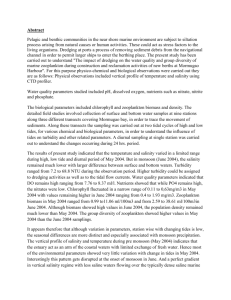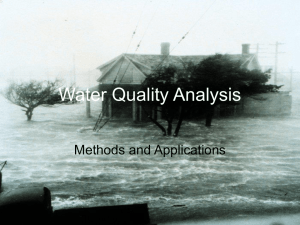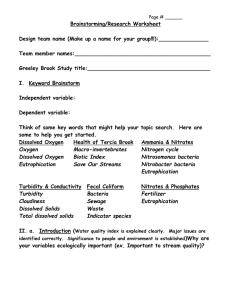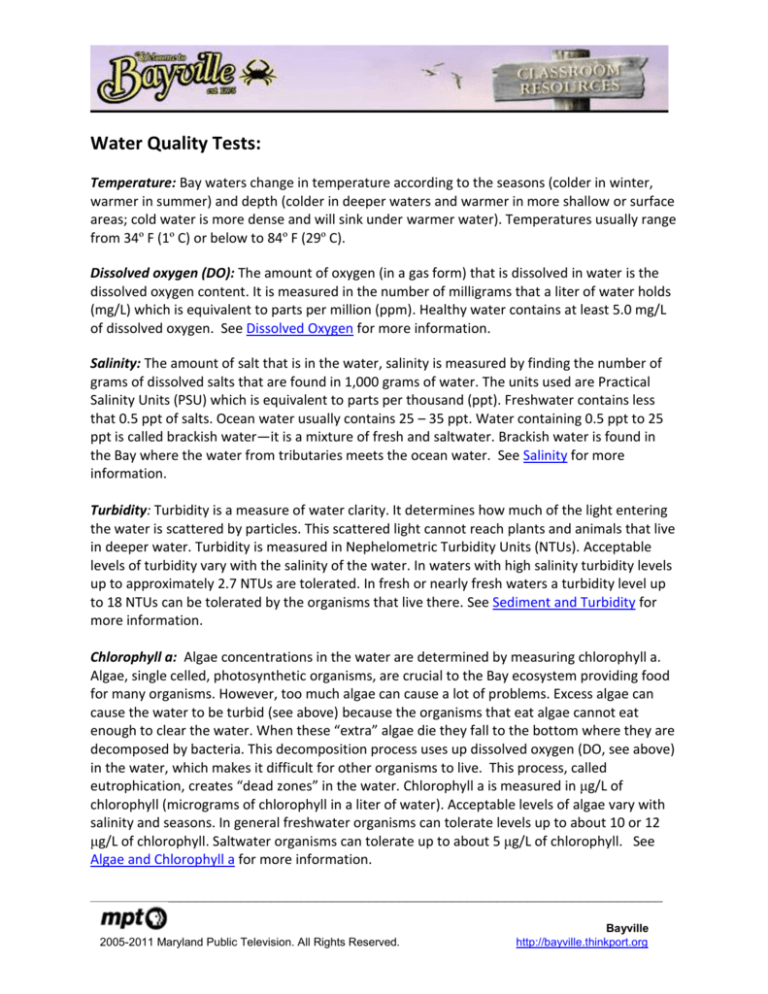
Water Quality Tests:
Temperature: Bay waters change in temperature according to the seasons (colder in winter,
warmer in summer) and depth (colder in deeper waters and warmer in more shallow or surface
areas; cold water is more dense and will sink under warmer water). Temperatures usually range
from 34º F (1º C) or below to 84º F (29º C).
Dissolved oxygen (DO): The amount of oxygen (in a gas form) that is dissolved in water is the
dissolved oxygen content. It is measured in the number of milligrams that a liter of water holds
(mg/L) which is equivalent to parts per million (ppm). Healthy water contains at least 5.0 mg/L
of dissolved oxygen. See Dissolved Oxygen for more information.
Salinity: The amount of salt that is in the water, salinity is measured by finding the number of
grams of dissolved salts that are found in 1,000 grams of water. The units used are Practical
Salinity Units (PSU) which is equivalent to parts per thousand (ppt). Freshwater contains less
that 0.5 ppt of salts. Ocean water usually contains 25 – 35 ppt. Water containing 0.5 ppt to 25
ppt is called brackish water—it is a mixture of fresh and saltwater. Brackish water is found in
the Bay where the water from tributaries meets the ocean water. See Salinity for more
information.
Turbidity: Turbidity is a measure of water clarity. It determines how much of the light entering
the water is scattered by particles. This scattered light cannot reach plants and animals that live
in deeper water. Turbidity is measured in Nephelometric Turbidity Units (NTUs). Acceptable
levels of turbidity vary with the salinity of the water. In waters with high salinity turbidity levels
up to approximately 2.7 NTUs are tolerated. In fresh or nearly fresh waters a turbidity level up
to 18 NTUs can be tolerated by the organisms that live there. See Sediment and Turbidity for
more information.
Chlorophyll a: Algae concentrations in the water are determined by measuring chlorophyll a.
Algae, single celled, photosynthetic organisms, are crucial to the Bay ecosystem providing food
for many organisms. However, too much algae can cause a lot of problems. Excess algae can
cause the water to be turbid (see above) because the organisms that eat algae cannot eat
enough to clear the water. When these “extra” algae die they fall to the bottom where they are
decomposed by bacteria. This decomposition process uses up dissolved oxygen (DO, see above)
in the water, which makes it difficult for other organisms to live. This process, called
eutrophication, creates “dead zones” in the water. Chlorophyll a is measured in μg/L of
chlorophyll (micrograms of chlorophyll in a liter of water). Acceptable levels of algae vary with
salinity and seasons. In general freshwater organisms can tolerate levels up to about 10 or 12
μg/L of chlorophyll. Saltwater organisms can tolerate up to about 5 μg/L of chlorophyll. See
Algae and Chlorophyll a for more information.
____________________________________________________________________________
2005-2011 Maryland Public Television. All Rights Reserved.
Bayville
http://bayville.thinkport.org






